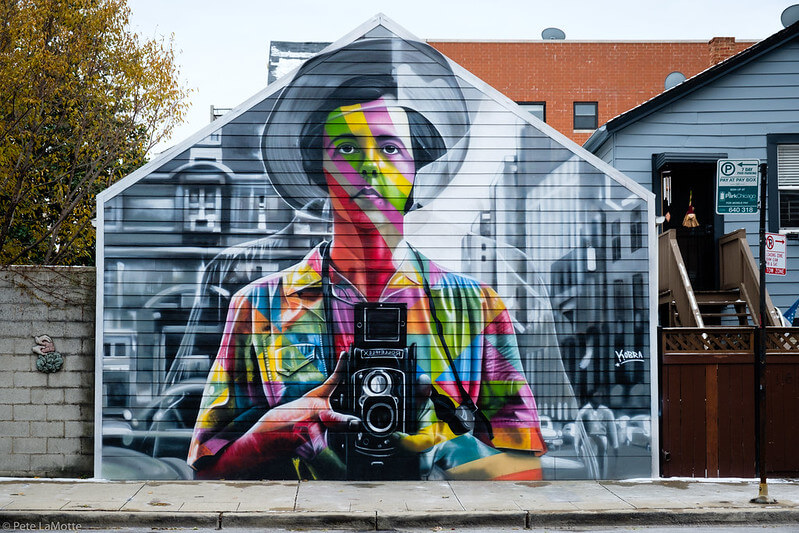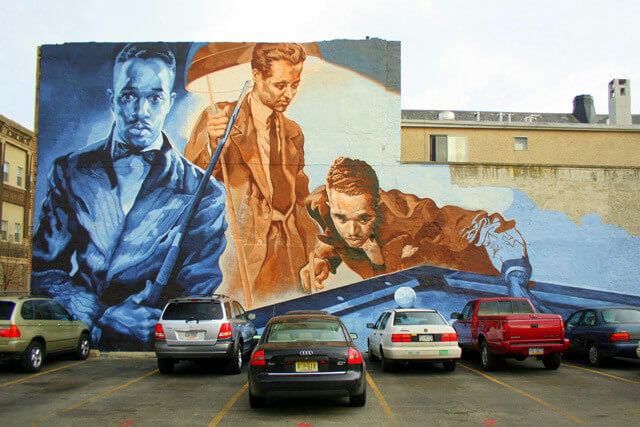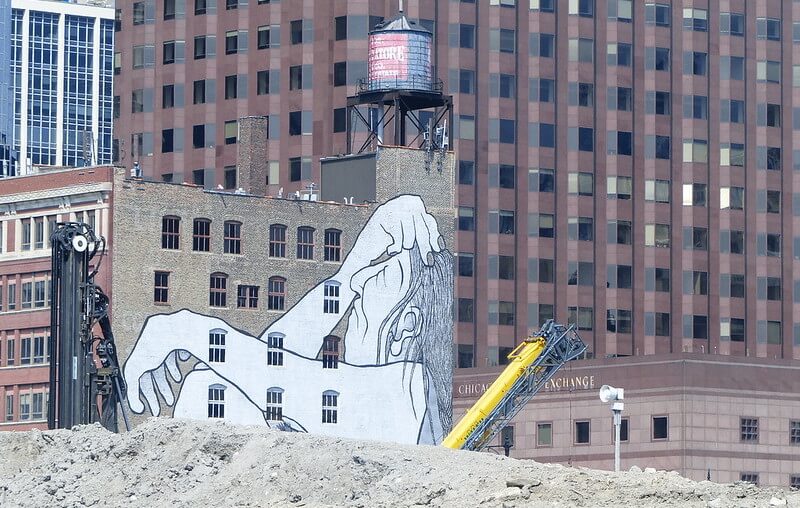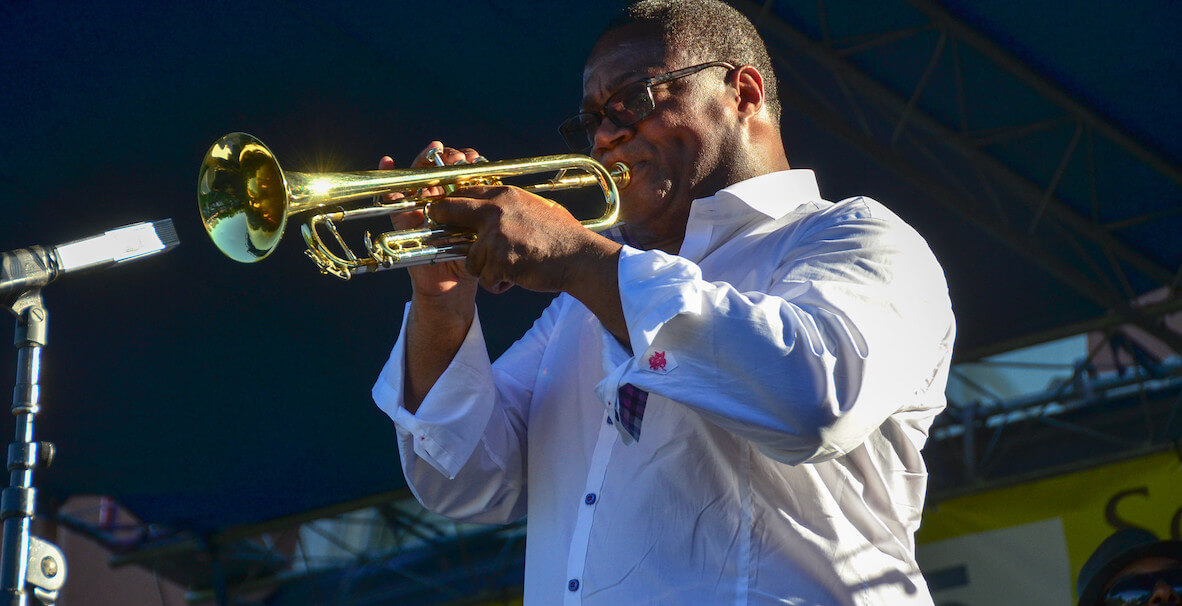There’s no question that Chicago is one of the great arts capitals of America—what that city’s chief arts and culture director, Mark Kelly, calls “one of the lively culture centers of our country”—with its world-class museums, music and literary scenes. There’s also no question, Kelly says, that most of the attention, resources and funding for those arts, as in Philadelphia and many other American cities, stays in a relatively small swath of Chicago—downtown or along the affluent north side of the city.
Conversely, according to Kelly, if you look at where musicians are filing copyrights for their work in Chicago—where the creators live and work—they are predominantly in the south and west sides of the city, areas that are mostly Black, brown and underserved by city resources.
More on how art benefits Philly
That realization, in the early days of Chicago Mayor Lori Lightfoot’s tenure, forced a reckoning for Kelly’s Department of Culture, Arts and Special Events (DCASE). “What are city policies that attend to this disinvestment and denial? And how does that impact the city?” says Kelly, who was hired by his city’s previous mayor, Rahm Emanuel. Lightfoot kept him on, but tasked him with creating more equity. “Arts have to be everywhere,” Kelly says. “The city has to take a far more purposeful role in making that happen.”
That’s the aim behind Arts 77, Lightfoot’s $60 million plan to boost arts and culture in all 77 of Chicago’s neighborhoods. The plan, announced in April, does not signify a huge increase in general funds going towards its arts and culture agencies, as in other cities, including New York. That would be great, and there is no doubt a need for it in Chicago as in Philadelphia, as Stephan Salisbury and Peter Dobrin pointed out in the Inquirer last week—in no small part because of the enormous economic benefits to a robust arts community.
But even with federal stimulus funds, money is limited and choices are difficult. As Kelly puts it, “The needs are great, the capacity is limited.”
Instead, Arts 77 takes a different approach to growing a more equitable arts scene in the midwestern city: embedding arts and culture into multiple city departments, using the collective resources and responsibilities of agencies across Chicago to push art everywhere.

Nearly a quarter of the $60 million investment, for example, is coming from the city’s capital program, which has pledged $15 million over the next five years to install public art within the public way on Chicago’s south and west sides. Another $3.5 million is from the city’s Department of Aviation, for public art at the airport’s remodeled international terminal. “Public art is being deemed as infrastructure, as necessary for a safe streetscape,” Kelly says.
Chicago Park District is leading a massive effort to revive its 15 neighborhood cultural centers, including 11 auditoriums and several gallery spaces, that are in historic buildings located in city parks, many of which have fallen into disrepair and disuse. The Chicago Public Library system is also part of the Culture in My Neighborhood initiative, investing over $10 million to renovate a historic building to create a fourth regional branch. Most of those, again, are on the south and west sides of the city, neighborhoods with far fewer cultural resources. The $40 million project will use park, city, state and private funds to renovate over 20 buildings, so they can serve as cultural hubs for years to come.
“Arts has to be everywhere,” Kelly says. “The city has to take a far more purposeful role in making that happen.”
And Chicago’s Planning Department, embarking on the first citywide planning effort in decades, is hiring artists to be part of its neighborhood engagement teams, to ensure arts and culture are part of any discussion about how to shape the city’s 77 communities for decades to come. “The new commissioner of planning believes, like we do, that you don’t make a neighborhood whole without understanding the role that creativity and the arts and cultural vitality play in that,” Kelly says. “It’s part of the whole and can’t be thought of as anything but.”
DCASE has also reconsidered the work it does, which includes hosting 80 to 90 free musical performances for 1.5 million people a year, mainly at Jay Pritzker Pavilion downtown—including its world famous Jazz Festival. This year (carried over from 2020 because of the pandemic), DCASE declared its first Year of Chicago Music, an effort to showcase the city’s vast and varied musicians and the venues in all parts of the city where they perform.
They created a brand—Music in the Key of Chicago—and are planning a month-long festival starting in August that will spotlight clubs; a national tourism campaign; celebrations on the south and west sides; and ways to book and pay musicians for city-sponsored events.
All of this—all of it—could happen here in Philadelphia. We are the undisputed capital of public art in every neighborhood of the city; an exciting, varied, historic (and sadly under-appreciated) music town; a city of neighborhoods where culture and creativity are natural outcrops of vibrant, diverse communities. We could be—dare we say it?—better than Chicago at all of this. And, in fact, this kind of thinking is not unheard of here.
Back in the early 2000s, when Estelle Richman was Mayor John Street’s director of what was then called the department of social services (and later managing director), she had a similar vision of the arts to Lightfoot, as integral to the work of city government. Jane Golden, executive director of the Mural Arts Program, says Richman tasked her with creating programs within the departments of behavioral health, public health, prisons, parks, the court system, schools—and funded them.
A 2017 study by the Greater Philadelphia Cultural Alliance calculated the economic impact of arts and culture in Philly at $4.1 billion, providing 55,000 full-time equivalent jobs.
“We were able to plug in to work through the issues of violence and suicide and truancy and the courts,” says Golden. “We saw what it could mean to have arts as like a B12 shot in all these areas. Artists have a way of getting us to look at something we thought we knew, and see it in a different light. Estelle knew, and I believe, that you can’t discount the role of creativity in breaking the mold of how we normally do things.”
That brief period, when art was weaved into the fabric of Philadelphia city government, was “life-changing” for Mural Arts, Golden says. Much of the work that they started under Street continues today, funded both by the city and private donations, and it spurred a new approach to MAP’s definition of “public art” from paintings on a wall to multiple and varied creative outlets for community growth and well-being.

Mayor Kenney, though, has taken a decidedly different approach to the arts. Last year, when the pandemic forced budget cuts, he crippled the city’s Office of Arts, Culture and the Creative Economy (OACCE), cutting two-thirds of its budget and seven of its nine staff members. This year, facing a boom thanks to federal relief funds, Kenney’s budget restores one staff member. Kenney’s new budget proposal also includes $2 million for the Philadelphia Cultural Fund, to distribute to smaller arts groups, a third less than before the pandemic, and another $8 million in arts funding to the Philadelphia Museum of Art, Mural Arts, OACCE, the African American Museum and the Philadelphia Zoo.
City Councilmembers Isaiah Thomas and Katherine Gilmore Richardson have helped usher in some additional support: Their $1 million Illuminate the Arts program is in the process of granting $1,000 to $25,000 to organizations and artists, particularly of color; and they have proposed Council add an additional $5 million in arts funding to the Fiscal Year 22 budget. Councilmember David Oh, meanwhile, has proposed a $45 million infusion of cash into the city’s arts and culture budget.
Thomas is hoping to fund a “night time economy manager” through the Commerce Department to advocate for bars and restaurants with city and state officials. He’s talking to the Streets Department and Mural Arts about painting crosswalks in intersections with high traffic incidents, to prevent pedestrian deaths. (A touch of the Lightfoot model of embedding arts and culture within city government.) And he has initiated an Arts & Culture Recovery Week in July, to showcase and support local artists.
And philanthropy has stepped up: Michael Forman and Jennifer Rice’s Art Works, for example, is providing $3 million in grants to emerging artists and community organizations, primarily from underserved communities. And even Mural Arts has begun regranting funds to smaller organizations, and to artists through its Fellowship for Black Artists.
But more sweeping government efforts to revive the arts have fallen short here: Thomas’s proposal for an arts-related community jobs program similar to one in New York has little support in City Hall, as do proposals for more emergency grants to struggling arts groups, and an increase to the Cultural Fund’s paltry budget.
This is, among other things, economically short-sighted. A 2017 study by the Greater Philadelphia Cultural Alliance calculated the economic impact of arts and culture in Philly at $4.1 billion, providing 55,000 full-time equivalent jobs. “These are jobs that provide paychecks not just to cultural staffers, but also to independent artists, designers and musicians; marketers, accountants and consultants; construction workers and contractors; and chefs, bartenders and hotel managers,” the report says.
It is, also, giving short shrift to the idea of what makes cities—what makes Philadelphia—beautiful and vibrant places to live, visit, create and heal. Can you imagine our city without art? Without music and poetry? Without designers and design thinkers? Is it a city you want to imagine?

Philly is not alone. In America writ large, we have long failed to see arts as something worthy of significant public investment—unlike, say, Germany or France, which, rather than cut funding to the arts during 2020, boosted their support in recognition of the fact that arts and culture are critical to helping citizens get through a crisis. And Chicago is no different than Philly in facing difficult choices.
“Is $60 million enough? Heck no, but it’s unprecedented for the city,” Kelly says. “The challenges are really deep. There was a hue and cry here, What the hell is the mayor doing investing in the arts, when we have so many problems?”
As with everything, seeing the arts as critical not just to arts, but to a thriving city takes vision and leadership, something Lightfoot has shown over and over. And that sends a message that pays dividends. Of the $60 million pledged to Arts 77, over $16 million comes from philanthropy. But that number is growing, Kelly says, as private funders follow the city’s lead.
“Artists are using their power for good in every single community in the city,” Jane Golden says. “We can dream big and be creative, and find solutions to the day to day problems that Philadelphians grapple with. And the arts can be part of that.”
“If the heart of this is philanthropic funding, the city doesn’t have its priorities straight,” he says. “If the city does have its priorities straight, it’s more attractive to private funders. We’re getting more support and interest than we ever have had before.”
Can we see this happen in Philly? Golden says she was heartened last year, when the arts community came together to speak with one voice in support of the Philadelphia Cultural Fund. And she is optimistic that, as we head towards another Mayoral race, that advocacy will continue, and the arts will be seen for what they are: A powerful force for good.
“Artists are using their power for good in every single community in the city,” she says. “Like a crescendo, I want to see the arts build up and take Philly through the 21st century. We can dream big and be creative, and find solutions to the day to day problems that Philadelphians grapple with. And the arts can be part of that.”
Update: This story has been updated to reflect Councilmember David Oh’s proposal for a $45 million increase in arts funding in next year’s budget, announced the day this story was published.
Header photo by Eric Allix Rogers / Flickr



